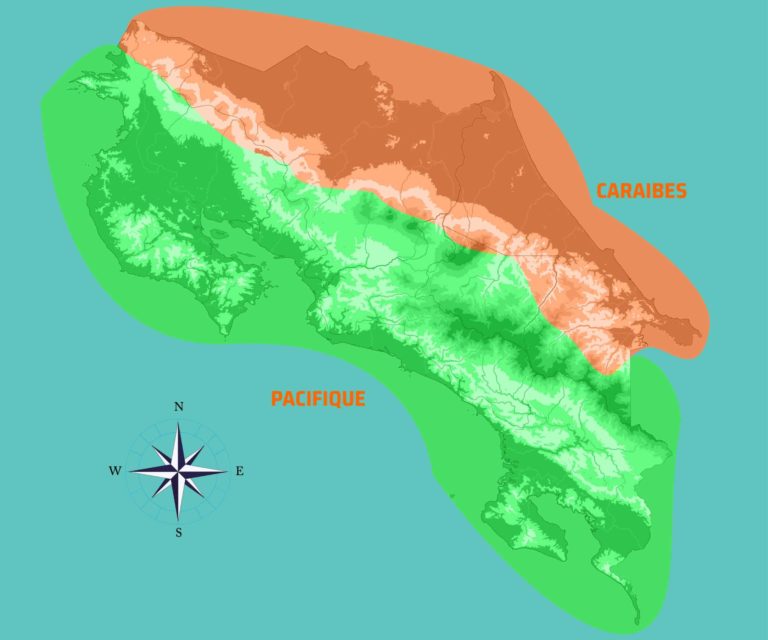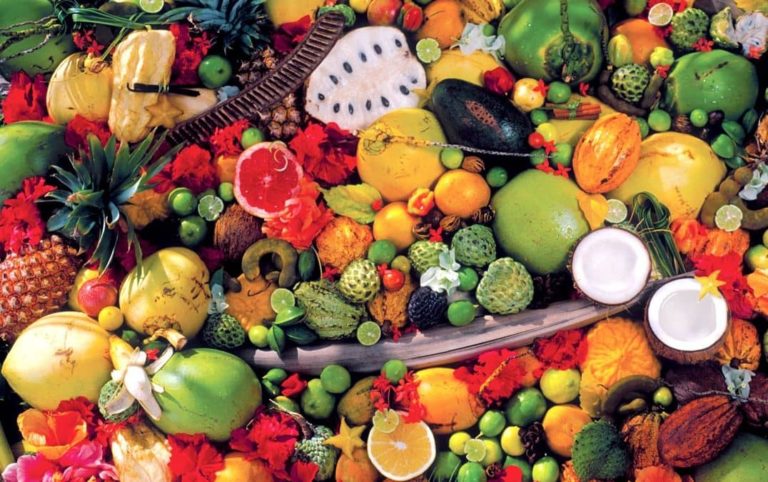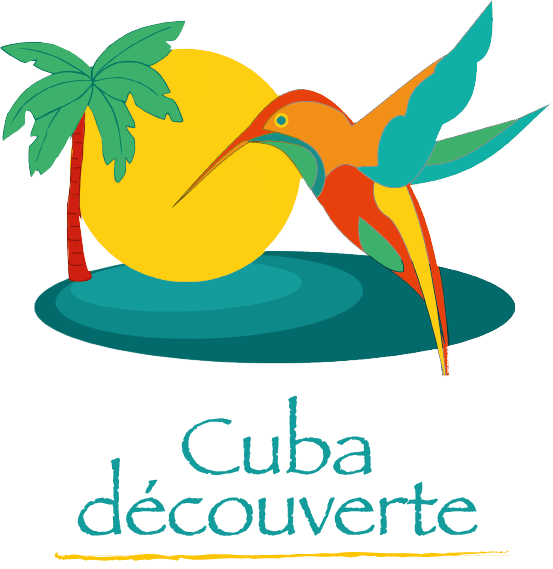BIODIVERSITY, FAUNA AND FLORA
10,000 species of plants, 1,400 species of orchids, 15,000 species of butterflies, 870 species of birds, 231 species of mammals, 220 species of reptiles, 160 species of amphibians, 34,000 species of insects, 1,600 species of fish. Some parks or reserves are must-sees for observing flora and fauna such as Tortuguero, Palo Verde, Monteverde, Chirripo, La Amistad and of course the famous Corcovado. In most cases, you will need a guide to visit them and depending on the length of your stay and your interests, we will adapt your tour. Combining an active nature conservation policy since the 1960s with development combining ecology and economy, Costa Rica is undoubtedly unique in the world.
Nearly 30% of the territory is protected: 27 national parks, 9 ecological reserves, 30 national wildlife reserves, 12 forest reserves, to which must be added the numerous private reserves. Ecotourism has become the country’s primary resource and during your stay you will discover this green paradise home to an incredible diversity of biotopes. While some countries are prized for their culture, monuments or architecture, Costa Rica is sought after for its living world, its fauna and you will benefit from a real biology lesson in situ.
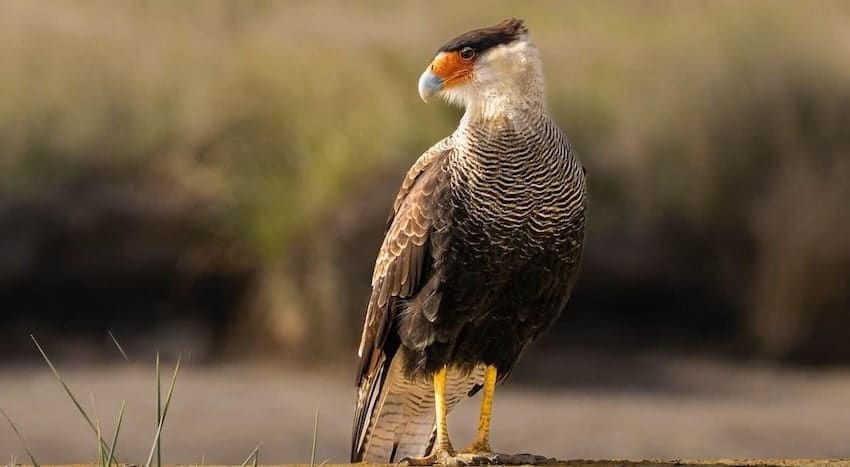
The birds
Costa Rica is home to no fewer than 915 bird species, including 3 endemic species and 93 endemic species shared with neighboring Panama, making it the highest concentration of bird diversity and wildlife in the world. These endemic species include the Copper-headed Hummingbird and the Boucard’s Arian (hummingbird).
The resplendent quetzal is mainly seen around San Gerardo de Dota and Monteverde, while scarlet macaws are numerous around Tarcoles, Golfo Dulce, Puerto Jimenez, and Carate, south of Corcovado. Tanagers are found throughout the country, and oropendolas, those strange birds with colorful beaks, thrive in almost any climate.
Many migratory species stop in the wetlands in the north of the country such as Boca Tapada or Palo Verde National Park.
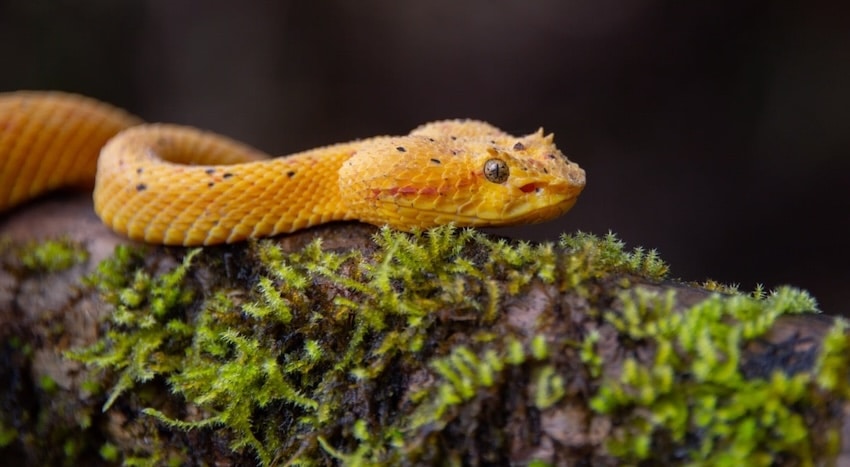
Reptiles
More than 220 species of reptiles have been identified throughout the territory and among the most common species are lizards, basilisks, boas (6 species), colubrids, caimans, crocodiles, geckos, iguanas, ctenonotus. Snakes number 138 species including 9 highly venomous and 18 venomous but it is however difficult to observe them and a guide is recommended to flush them out.
The green iguana turns orange to attract a female when it is looking to mate between November and January. Another miniature dinosaur is the Common Basilisk or Jesus Christ lizard. It owes its name to the fact that it is able to run on water at speeds of up to 8.5 km/hour over distances of 15 to 20 m. On land it can reach speeds of 11 km/hour. It has the ability to stay underwater for more than half an hour.
> List of reptiles of Costa Rica – Non-exhaustive
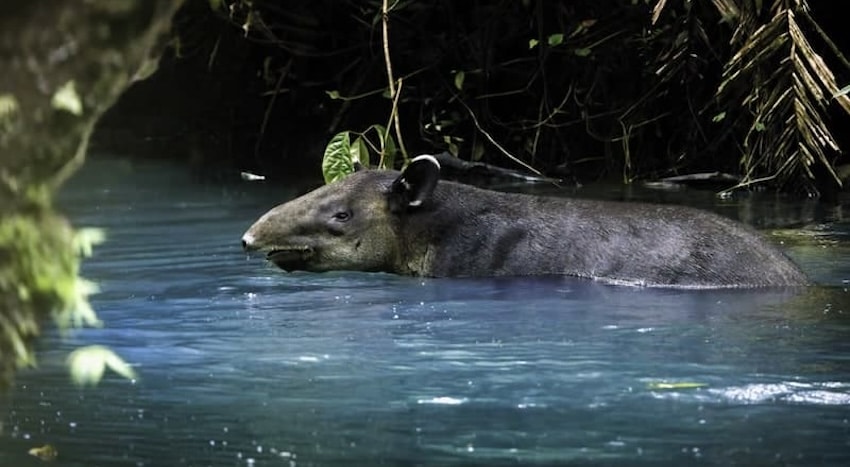
Mammals
231 species of mammals have been recorded throughout Costa Rica. 4 species of primates (capuchin monkey, howler monkey, squirrel monkey and spider monkey), armadillos, opossums, porcupines, 2 species of sloths, coyotes, foxes, peccaries, roe deer, brocket deer, martens, otters, gray squirrels, skunks, tapirs, anteaters, kinkajous, 109 species of bats, 6 species of felines including jaguars, pumas, margays and ocelots are part of this impressive land-based sampling.
On the sea side, there are no less than 3 species of whales and 5 species of dolphins, manatees which benefit from the rich and clement waters of Costa Rica.
> List of mammals of Costa Rica – Non-exhaustive
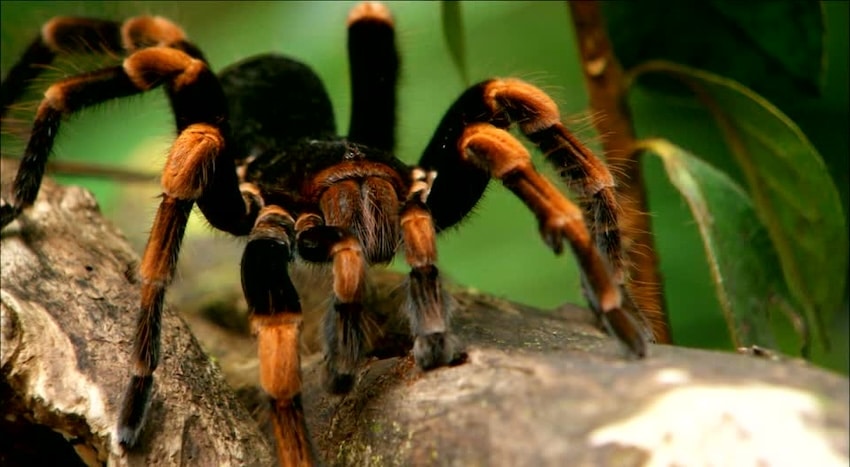
Insects and arachnids
Among the estimated 10,000 insects, butterflies take the cake, as 1/4 of the planet’s butterflies are found in Costa Rica, but this figure is only an estimate, as more than 100 new species are discovered in the country each year.
Winged fauna such as beetles, grasshoppers, dragonflies, bees and of course mosquitoes can also be easily observed.
Among the best known spiders are tarantulas (3 species) and Nephilas and some 8 species of scorpions are present in the territory.
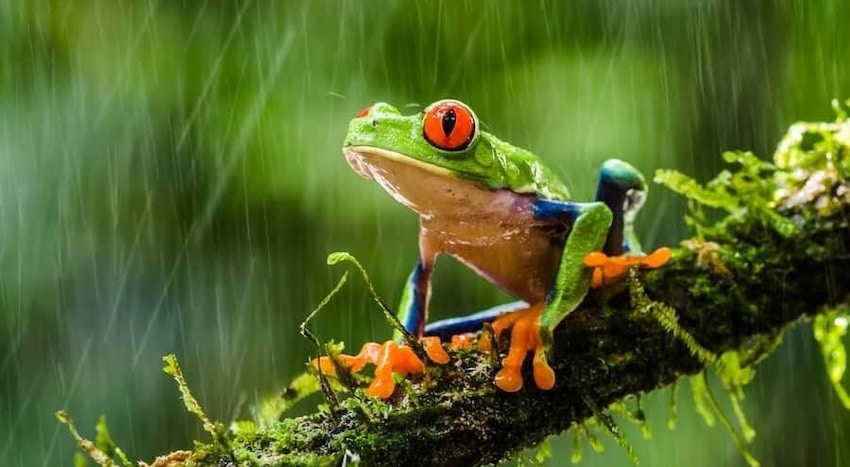
Amphibians
Costa Rica’s fauna would be sad without all its tree frogs and toads (112 species), glass frogs (13 species), poison dart frogs (8 species), salamanders (40 species), Gymnophiona (7 species), are the common amphibian families in Costa Rica. The majority of Costa Rica’s frogs are rather small in size – 2 to 3 cm – however some can reach 15 cm.
Some are poisonous and can discharge a venom that blocks neuromuscular activity. However, the poison must penetrate in quantity through the mucous membranes (mouth, nose, etc.). Touching a frog of this type is not dangerous unless you have an open wound. Fans can also discover the Rhinophrynus Dorsales, the endemic harlequin frog, which is one of the many species threatened by climate change.
Amphibians are particularly sensitive to micro environmental changes and are extremely vulnerable to changes in natural habitats, and the golden toad of the Monteverde Cloud Forest is an example of this, as it is now considered extinct. More than 20 other species are also threatened.
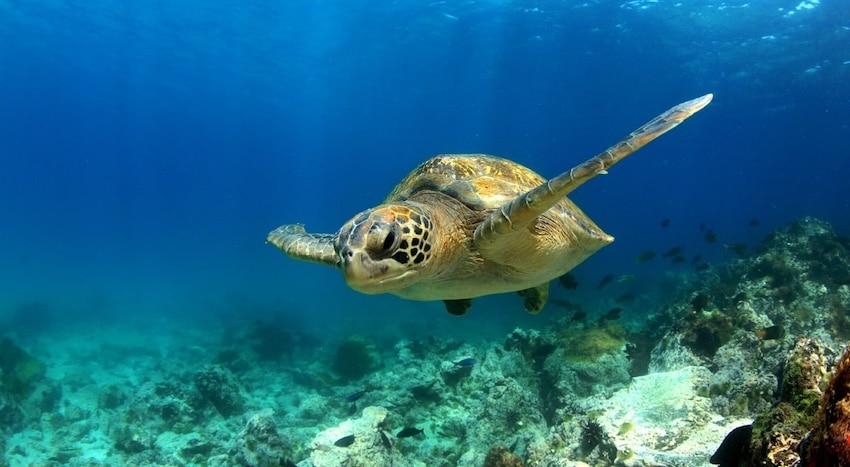
Aquatic fauna
It is undoubtedly for its turtles that many tourists travel to Costa Rica because in fact, 5 of the 7 species identified in the world have chosen the coasts of Costa Rica to reproduce: the leatherback turtle, the green turtle, the clouante, the ridley and the hawksbill turtle come here every year to lay their eggs.
Marine fauna such as dolphins, otters, corals, lobsters and multi-colored fish are also part of the underwater scenery and finally, northern and southern whales come together twice a year to give birth to their young and raise them for a few months before their big journey. The best observation sites are the Marino Ballena Park and the Golfo Dulce where they stay for several months to raise the calves after their birth.
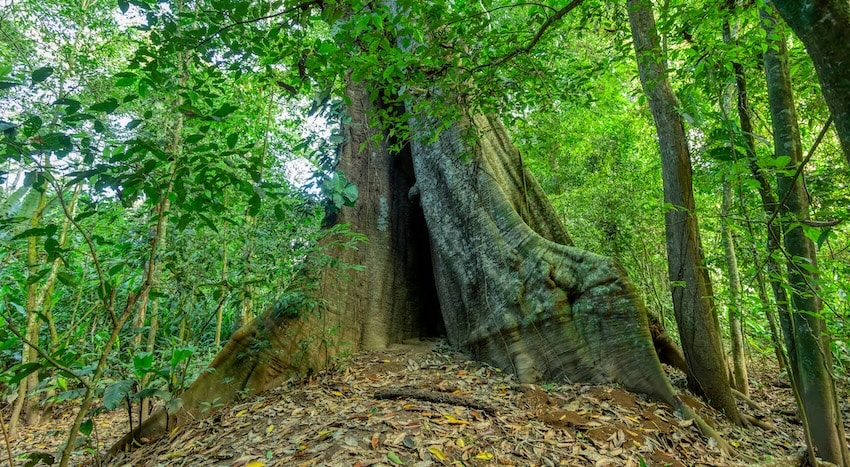
Trees
There are around 1,300 species of trees that you can observe in Costa Rica and although some are spectacular, the tallest of them, a Ceibo “a type of oak” can reach 70 m in height. The Guanacaste – national tree – and its umbrella foliage, the Corteza Amarilla and its yellow flowers, the flamboyant, the strangler fig, the rosewood, the jaracanda, the false carob tree, the eucalyptus are the most photogenic and many species produce precious tropical woods while others are protected.
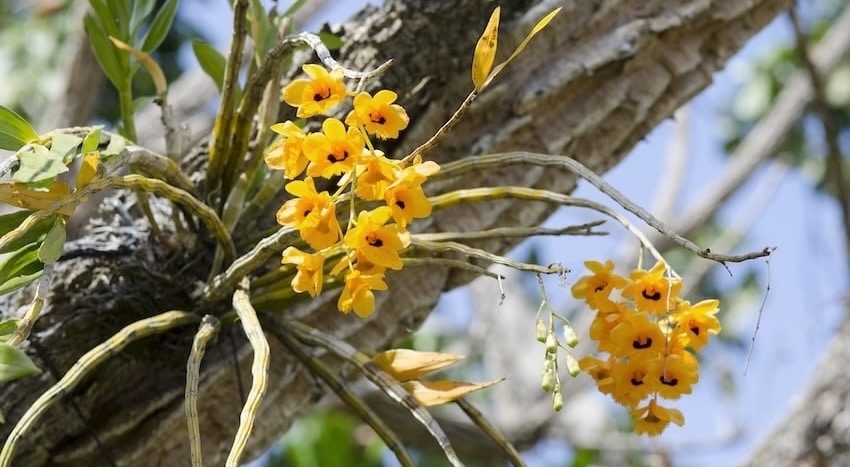
Plants and flowers
Costa Rica’s natural wealth makes it easy to observe in the forest heliconias of more than 100 different species, bromeliads, poinsettias, asclepias, euphorbias, passionflowers, anthuriums, petras volubilis, banana trees, cuckoo flowers, red gingers, agapanthus, ferns and numerous species of palm trees.
There are also around 1,500 species of orchids nestling in the trees, and the Guaria Morada is the best known of these, as it is the national flower. The country has a long history of producing ornamental plants, and there are many crops grown for export.
Added to this are the multiple crops of coffee, pineapple and cocoa which constitute the country’s second largest economy.
A recent look at Costa Rica
Why travel with us?

A flawless reputation since 2008

A single contact in English

Our presence on the ground all year round

Our expertise for a tailor-made offer

